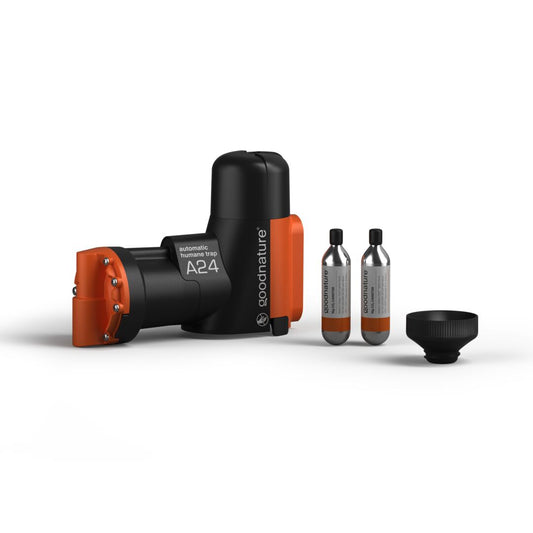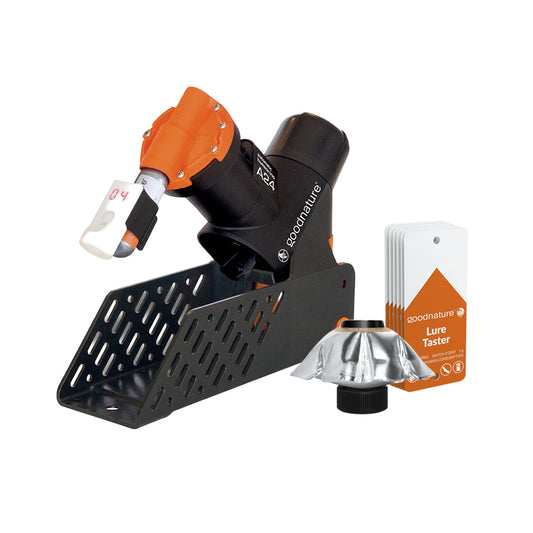
Rodents have a way of turning up where least expected. For example, Captain Cook's famous second voyage in the 17th century spread the scope of humanity's vision to the far south. Many of those areas were totally free of any rat or mouse population, but sailors following his discoveries also spread something else into the Antarctic - rats. Humanity is only just now starting to find success in dealing with the aftermath. If rats can easily become such a huge problem on an Antarctic island, then you might suspect even worse dangers for those islands in warmer climates. And you'd be quite right. In fact, Vancouver Island is facing a big rat problem of its own.
Changing Cultures and Changing Habits
Of course, rat colonies have been present on Vancouver Island for some time. The animals weren't originally native to the region but they've been in B.C. as a whole since the 1800s. As is often the case, then tiny rodents would arrive in B.C. as stowaways on ships. And the rodents have found a lot to love in their new home. Not only is the climate a good match for them, they also love the fact that humans have settled in the area. Rat and mouse alike have a tendency to fit right into human towns and cities. Humanity isn't just useful as a source of food and shelter either. People tend to also stick to predictable schedules that make it easier for a rat population to live alongside human society. A rat or mouse knows when people are likely to be active and when they go to sleep. It's easy for them to plan their activity and forage accordingly.

But the pandemic changed human habits. And when human habits change, so do that of the mouse and rat. The rodents have in large part spread all over the world because they share so many traits with humans. Humans, rats, and mice eat many of the same foods and enjoy similar climates. This has led to a strong link between human and rodent behavior. When humans expand, rodents follow. And when human culture changes the rat and mouse tend to alter their own lives in response. Human disease in particular often makes an entire culture change its way of life fairly quickly. Right now Vancouver Island is working to monitor monkeypox cases. But it, like all of the world, is also still recovering from the COVID pandemic.
The pandemic caused some significant changes in how people spend their day. More people were spending time at home and away from the office. And as the pandemic slowed down, that habit changed again as things gradually changed back to normal. Finally, food costs shot up in the aftermath of the pandemic's recession. Not only were people spending time in different places than usual, but they were also producing more varied foods. People who'd previously just kept a backyard for ornamental plants were suddenly trying their hand at growing food. And many of those same people started seriously compositing in order to help the process along. These two habits, gardening and composting, created an ideal situation for any rat in the vicinity.
Compost might not seem very inviting to humans, but a rat is a lot less squeamish. Any source of heat is seen as a great way to micromanage a rat's temperature. And compost does, in fact, generate heat as it breaks down. Composts is essentially a rat's version of a heated home. It's easy for a rat colony to simply dig its way into compost piles. And the gardens next door mean that the rodents also have a supply of farm fresh produce right on their proverbial doorstep. In fact, the rat colonies actually like the heated compost more than they do the fresh fruit and vegetables. But make no mistake, the rat population most certainly does enjoy fresh produce. They're liable to steal your tomatoes and take some bites out of your fruit. But what's really catching people's attention is how many other things the animals are likely to bite into. And how the rat population is growing out of control as a result of the new hiding places and food sources.
A Confusing Pattern of Rat-Based Damage
People are used to rodents going after human food. It's not just the fresh produce either. Chewed-up cereal boxes are one of the classic signs that a rodent has made his way into your home. A rat wants to get into your food just as much as you do when you get home from work. But have you ever heard of a rat eating a car? It might not be occurring in the exact way you'd imagine. But more and more people in the Vancouver Island region have found damage to their cars that ultimately originate from the rat population.
Mechanics place the blame on materials used for wiring. Many auto manufacturers use soy-based insulation in their wiring. And given a rat's voracious appetite they're often thrilled at an unexpected source of soy proteins. Rats might not sit around chewing wires all day and night. But it doesn't take much damage for a wire to snap. This will, in turn, quickly render a car nonfunctional. More and more people are discovering that their cars have just stopped working out of nowhere. And the cause, of course, turns out to be rats.
New and Old Strategies To Deal With Rats
The rat problem has been further complicated by a ban on second-generation anticoagulation rodenticides. The ban was put into effect for good reason. Rodenticides work by building up within rats and mice over time. An animal that eats the rodent will itself take in the rodenticide. And despite the name, rodenticides can hurt a wide variety of different animals.
This issue with rodenticides is a significant problem even in smaller rodent populations. But B.C's rodent problem has become serious enough that the potential problems with rodenticides have grown as well. And this is especially true for more ecologically isolated areas like Vancouver Island.
The ban is a logical way to prevent larger-scale ecological damage. But it's also caused a lot of confusion for a public that's become increasingly aware of just how much damage a rat can do. However, more and more pest-control companies and homeowners have found their way to what seems to be the ideal solution - better mechanical traps.
These new forms of mechanical traps aren't just more effective. Though it's true that they vastly outperform any of the mechanical traps of the past. What makes them unique is the combination of humane methods, environmental safety, ease of use, and effectiveness. The shift to new methods can be a little confusing at first. But it's part of Vancouver Island's defense against an increasingly voracious rodent population.

How To Safeguard Your Home
Pest control companies are working hard. But ultimately the best defense for any homeowner is to take matters into their own hands as soon as possible. It's just a fact that increased rodent activity is going to be an issue for locals. But that doesn't mean you have to suffer through it. You can use the same traps as the professionals. And because they're mechanical rather than poison-based, there aren't any of the usual associated concerns. The only thing you really need to worry about is whether you're moving fast enough to get started before the rodents in your area.





